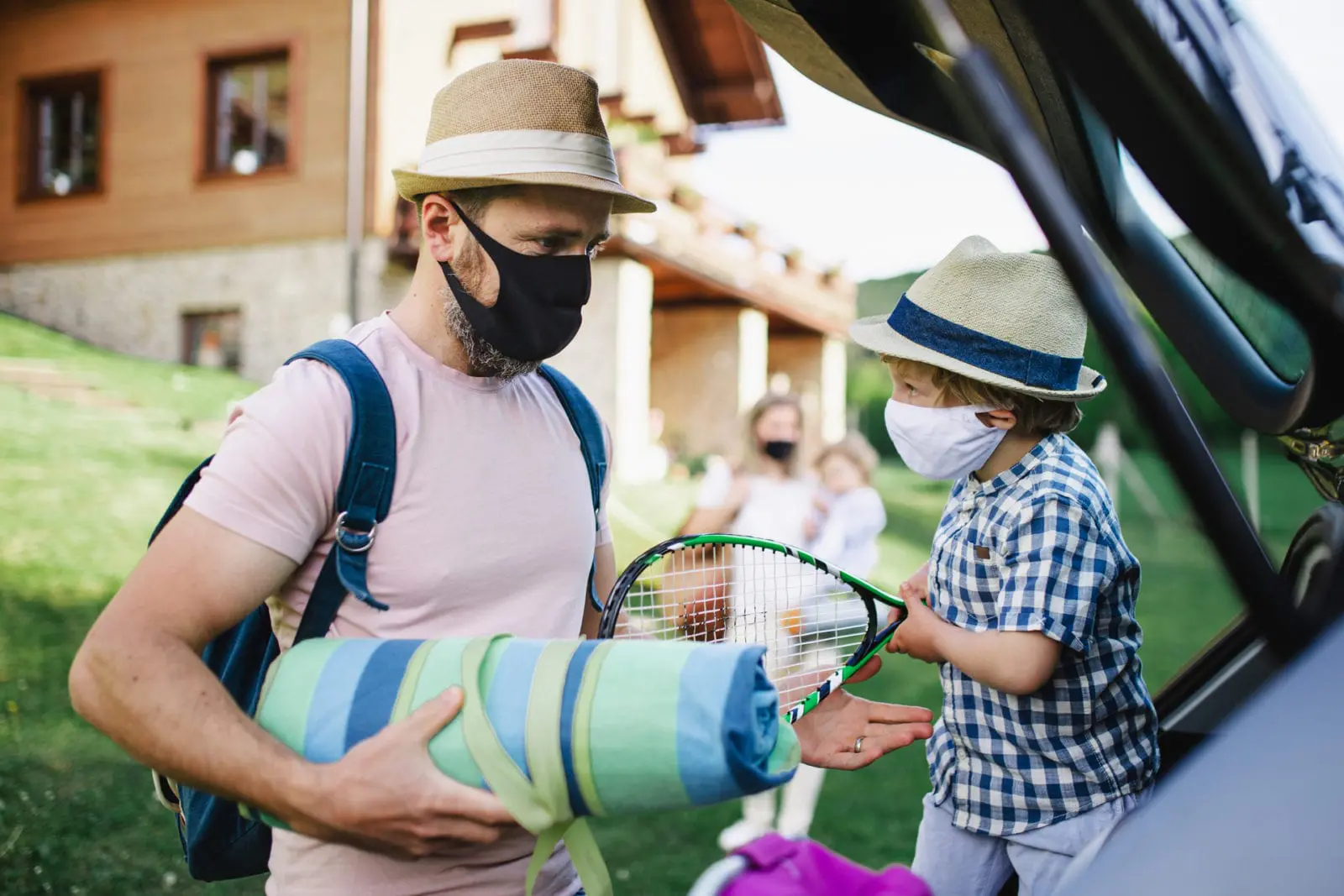For most people, lockdown hasn’t been easy, but at least the choice to stay home was clear. But as once-and-future travelers start thinking ahead to traveling again, deciding when and how to go back out into the world is less clear.
And for families that may soon include vaccinated adults and not-yet-vaccinated kids, things can feel even more confusing. Will there even be such a thing as relatively safe family travel this summer?
The answer will likely be at the intersection of the science and your family’s particular risk tolerance. “Even people with identical circumstances and risk tolerances can feel reasonable drawing different conclusions on how safe they might feel with various vacation scenarios,” says Dr. Dean Blumberg, Chief of Pediatric Infectious Diseases at UC Davis Medical Center in Sacramento, California.
The Centers for Disease Control and Prevention (CDC) is now saying that domestic travel for vaccinated people is on the table. And in early March, it released its first public health recommendations for vaccinated people. Looking ahead to a time of increasing immunity due to more people around the world getting vaccinated, it seems likely that travel will start to feel like more of a possibility in the second half of 2021.
In the near-term, the relative safety of travel will largely hinge on the specifics of your travel plans.
COMPARE AND SAVE: 10 Best Car Rental Booking Sites for Cheap Prices
How You Travel Will Matter
Even in pre-pandemic times, travelers understood that some family vacation activities came with more inherent risk. Getting a cold from the germy surfaces on an airplane was always a possibility. Buffets have a reputation as a potentially risky meal choice on a family cruise. And you’d be hard-pressed to find cautious travelers ever engaging in high-risk activities like bungee jumping.
PROTECT YOURSELF: How to Stay Healthy on Vacation
Thinking about traveling this summer requires the same types of safety calculations that travelers have always made. That means embracing the idea that not all travel is the same when it comes to risk.
Dr. Blumberg offers this example: “Going camping or staying at a rental house is safe now [because] the family is distanced from others in these situations. Vacations at more crowded destinations are a different story.”
A theme park or group tour, for instance, “might result in situations where you can’t social distance from others, and others may not be masking.” Choosing family travel destinations that give you a physical buffer from others and build in plenty of fresh air will be a key part of vacation safety this year.
The mode of travel also matters. “You can distance from others in your car,” says Blumberg, “but traveling by plane, rail, or bus results in sometimes unavoidable crowding with others who may not be masking consistently, increasing risk of infection.”
HIT THE ROAD: 11 Family Road Trip Ideas Every Kid Will Love
The CDC highlights the particular risk of transit, noting that “airports, airplanes, bus stations, buses, train stations, trains, public transport, gas stations, and rest stops are all places where physical distancing may be challenging and ventilation may be poor.”
Vaccinated or not, the CDC recommends continuing to avoid crowds, staying at least six feet from anyone not in your traveling party, and wearing a mask over your nose and mouth in public.
Considerations for Traveling with Unvaccinated Kids
As vaccinations become more widely available to all American adults, more parents and caregivers will be vaccinated in the coming months. But until kids can get vaccinated, families thinking about travel will have to contend with the challenge of unprotected children. Two weeks after receiving their final dose, fully vaccinated adults will have a low risk of infection. But unvaccinated children will still be vulnerable.
However, vulnerability looks different in adults and children. “We know that children are at lower risk of both infection and severe disease if infected,” says Blumberg. “If the children are otherwise healthy, if they do not have underlying conditions or diseases that increase risk for severe disease, then families may choose to travel even if the children are not vaccinated.”
If you do decide to travel, it’s important to keep up on emerging news about variants. “A lot of the risk in the future will depend on how the variants and vaccine protection plays out,” Blumberg notes.
If you’re considering air travel with kids, making sure adults and kids mask effectively is vital. And if the flight is long enough that kids will need to be unmasked to eat or drink, do so strategically by having seatmates take turns unmasking in order to eat or drink. “The highest risk for possible transmission is if people in close proximity are both unmasked at the same time, “ Blumberg says.
What about Visiting Grandparents?
Is it possible that the year without grandparents is finally drawing to a close? Blumberg says yes, families can now visit with grandparents—with caveats. “As long as the kids are healthy and do not have risks for severe disease, then this is now okay [if] the grandparents are fully vaccinated.”
Grandparents need to have completed the dose schedule of one or two shots, plus have waited the two weeks for immunity to develop, before scheduling time to visit with their unvaccinated or partially vaccinated family.
GRANDPARENTS WELCOME: 6 Family-Friendly Resorts Perfect for Multigenerational Vacations
The CDC elaborates on the grandparent scenario, giving the example that “fully vaccinated grandparents can visit indoors with their unvaccinated healthy daughter and her healthy children without wearing masks or physical distancing, provided none of the unvaccinated family members are at risk of severe COVID-19.”
However, the CDC cautions that some variations make the scenario less safe: “If fully vaccinated grandparents are visiting with their unvaccinated daughter and her children and the daughter’s unvaccinated neighbors also come over, the visit should then take place outdoors, wearing well-fitted masks, and maintaining physical distance (at least six feet). This is due to the risk the two unvaccinated households pose to one another.”
Whether you’re considering a vacation, a family visit, or a camping trip this summer, it’s important to continue taking additional safety measures like wearing masks. “The vaccines do not provide 100% protection so masking provides an extra layer of defense,” says Blumberg. And the CDC says that both fully vaccinated people and unvaccinated people should continue to follow guidance to protect themselves and others, including by “wearing a well-fitted mask, physical distancing (at least six feet), avoiding crowds, avoiding poorly ventilated spaces, covering coughs and sneezes, [and] washing hands often.”
Travel is on the horizon once again, but looking ahead to summer vacations will require a measured approach, a dose of caution, and some creativity. After a long time going without, though, that seems like a small price to pay for travelers who are itching to get back out into the world.
More from FamilyVacationist:
- 10 Best All-Inclusive Beach Resorts in the World
- 10 Best Outdoor Movie Screens for Backyards
- Best Flight Booking Sites for Travelers













